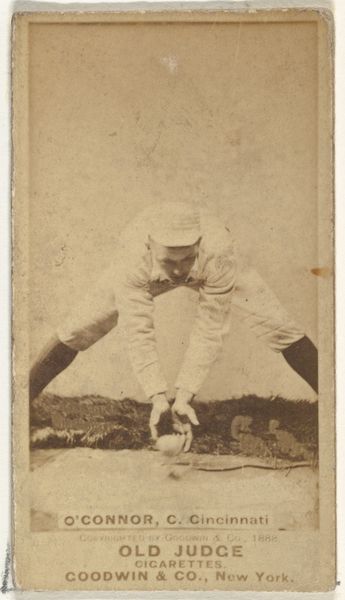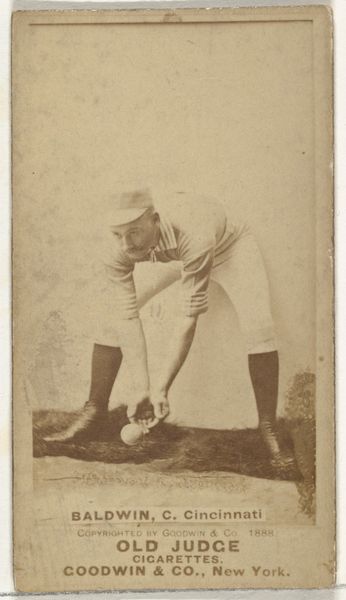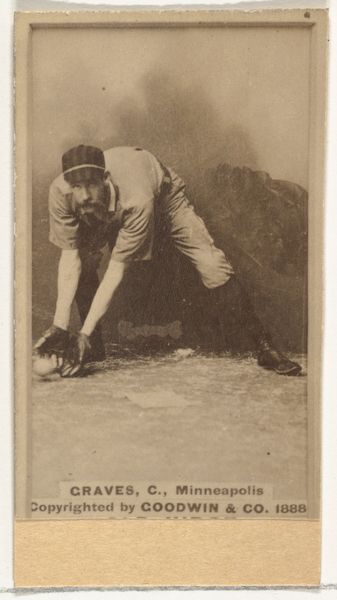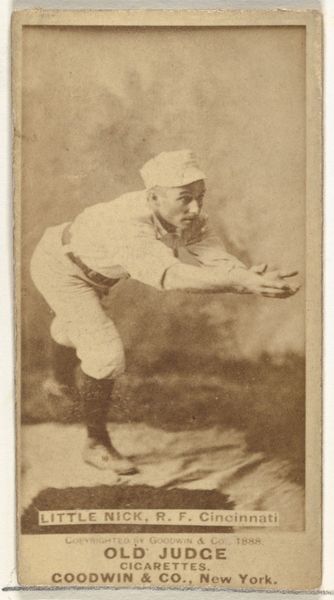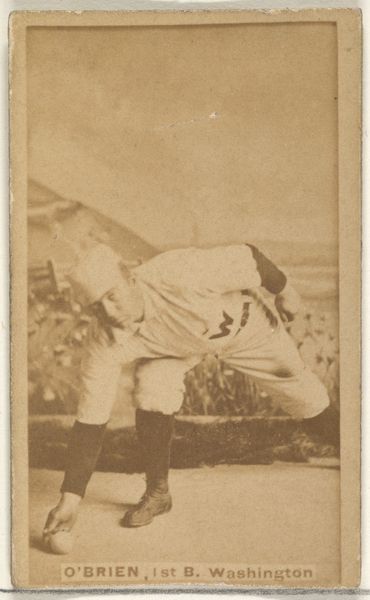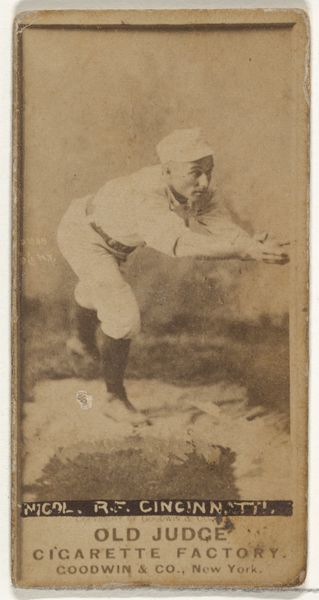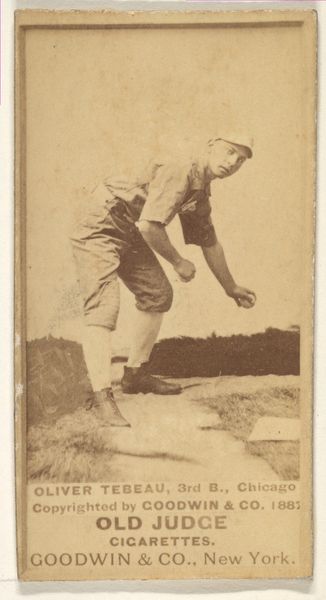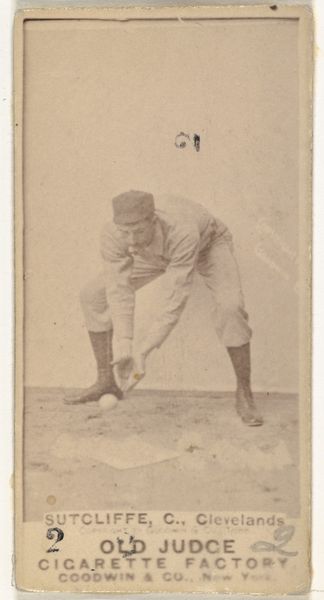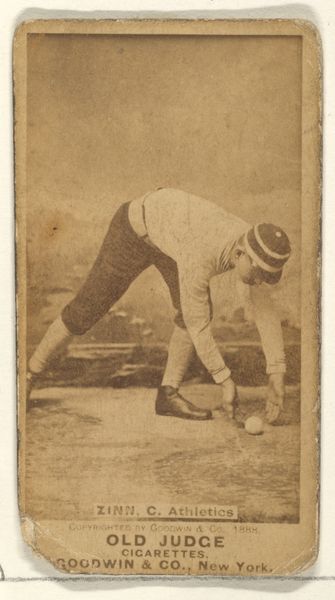
Card 3, from the Girl Baseball Players series (N48, Type 1) for Virginia Brights Cigarettes 1886 - 1888
0:00
0:00
print, photography
#
portrait
#
toned paper
#
pictorialism
# print
#
photography
#
genre-painting
#
athlete
#
realism
Dimensions: Sheet: 2 3/4 x 1 3/8 in. (7 x 3.5 cm)
Copyright: Public Domain
Editor: Here we have "Card 3" from the Girl Baseball Players series, made between 1886 and 1888 by Allen & Ginter. It's a photograph, a small print really, preserved at the Met. What strikes me is how the sepia tones lend it an antique feel, almost like a memory frozen in time. What can you tell me about the layers of meaning behind this image? Curator: This baseball card transcends a simple portrait of an athlete, doesn't it? Consider how it disrupts gender expectations through the imagery of a female baseball player. In the late 19th century, what do you think the cultural implications of depicting a woman engaging in a traditionally male sport might have been? Editor: It's challenging the norms for sure! Was the artist consciously using the female athlete as a symbol? Curator: Precisely. The card is less about the individual and more about the idea it represents. Remember, symbols are potent tools for shaping perceptions. This photograph, presented within the everyday context of a cigarette card, normalizes female participation in sport. And think about the gazes this photograph encountered—men and women. Do you think they registered it similarly? Editor: That's a good point. It's easy to look at it from a 21st-century lens. What about the backdrop – it looks painted almost, a studio backdrop instead of an actual ballfield? Curator: The backdrop indeed lends it a staged, theatrical quality. This points not towards documentary realism, but to a constructed image, ripe with symbolic meaning. The painterly backdrop emphasizes the artificiality, drawing attention to the crafted nature of the representation itself. It becomes a stage for presenting this 'new woman.' Editor: That makes sense. It’s fascinating how much can be read into such a small image. It challenges my own assumptions about historical gender roles and the power of images. Curator: Exactly. And it prompts us to reflect on the cultural narratives that are perpetually being constructed and reconstructed through imagery. I have never considered how that applies to advertising.
Comments
No comments
Be the first to comment and join the conversation on the ultimate creative platform.
